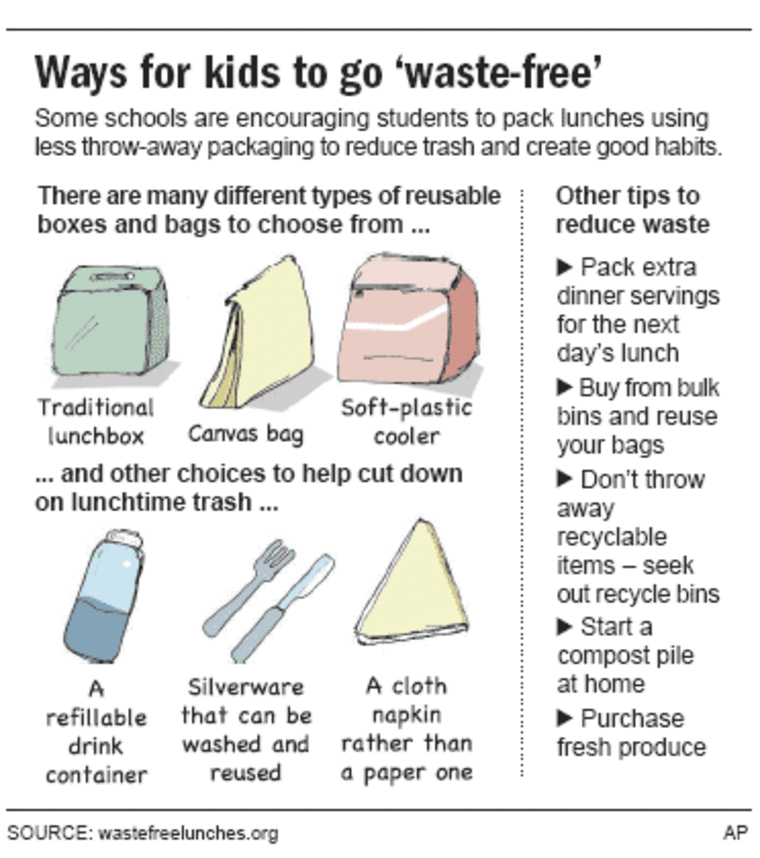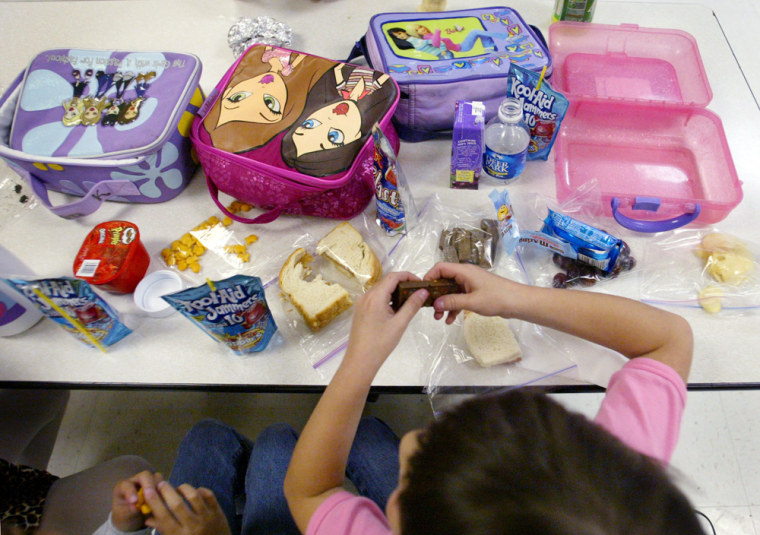As students walk by with their lasagna, snacks and fruit, Sally Oswald sees a cafeteria routine that most parents do not. This is no lunch line. It’s a trash line.
Students at Hammond Elementary toss away half-eaten apples, untouched sandwiches and portions of pizza slices. That’s on top of the packaging, from shiny juice pouches to plastic bags.
Even on Wednesdays, when the school encourages “waste-free” meals, lunchtime yields about 100 pounds of trash. Students weigh the trash to check each grade’s progress in reducing waste, but the numbers go up and down like signs of a struggling diet.
'This is a real problem'
“When you think that this happens in every elementary school every day, it starts to speak to you,” Oswald said, looking at the weekly trash tallies. “This is a real problem.”
In scattered communities across the country, schools are working to keep their cafeterias from becoming trash heaps. Whether driven to help the environment, save money or stop a careless tossing of food, some educators say they are hungry to make lunch more efficient.
The mission isn’t easy. Many parents favor throwaway packaging that’s quick and easy, right down to pre-wrapped peanut-butter sandwiches. Students have their own reasons for leaving things behind — some feel too rushed to finish meals during brief lunch periods, some don’t like the food, some don’t think to reuse those sealable bags.
It adds up. A single student produces 45 to 90 pounds of garbage a year in disposable lunches, according to New York’s Department of Environmental Conservation. A federal review of the National School Lunch Program found that wasted food costs more than $600 million, plus an untold nutritional loss.

Zero-waste tolerance
At Oak Hills Elementary in Ventura County, Calif., students filled eight barrels a day with lunch waste just a few years ago. Principal Anthony Knight was appalled to find most of it was water bottles, plastic bags and paper products that could be recycled.
So he enforced zero-waste tolerance. Students, under the watchful eye of peer monitors, divided their trash into waste and recycling bins. Parents were strongly encouraged to eschew conveniently packaged foods in favor of reusable containers. Before long, the waste was down to about one barrel a day.
“There was resistance at first,” said Knight, now superintendent of the Oak Park Unified School District. “Some people accused us of sticking our nose out of the educational realm and into their personal business. But most parents thought it was great because they were being taught by their children how to recycle. It became embedded in the school’s culture.”
Yet many food service workers from rural to urban areas say their schools do nothing to limit food waste, according to an informal survey by the American Federation of Teachers.
“You offer the kids choices, but you can’t force a child to eat,” said Alma Hackler, a lunchroom worker at Fontainebleau High School in Mandeville, La. “All you can control is to try to provide them with a nutritional meal.”
Parents hold the key
Parents do have control, however, over how they pack lunches, said Amy Hemmert of Santa Cruz, Calif., who tracks waste-free programs nationwide and runs a Web site that offers tips and sells lunch kits of colorful, reusable containers.
“A lot of parents write me out of frustration,” Hemmert said. “They say their kids sit down for two minutes, take a scoop of yogurt, take a sip out of the juice box, take a bite out of their cereal bar, and then it all goes in the trash. We need to think differently.”
That’s what they’re doing at Hammond Elementary in Laurel, Md., outside Washington.
Some of Oswald’s environmentally conscious fifth-graders have taken ownership of waste-free Wednesday. They skip their recess to monitor other lunch periods, taking turns on a microphone to remind other students about the value of recycling.
“We’re trying to set an example,” explained 11-year-old Derek Chan.
'We're saving nature'
There are signs it is working. On one recent day, fourth-grader Julie Kaplan showed off a lunch packed in reusable containers and announced plans to take home the leftovers. The 9-year-old had not one piece of trash. “We’re saving nature,” she said.
The school has had to tweak its experiment. Students in the grade with the least trash were praised as “losers” — as in trash losers — but that didn’t go over well. Now they’re called winners. Next year, students hope they will be offered prizes, such as extra recess.
Meanwhile, the waste-free days have had only minimal impact. Change will take time, said Oswald, who oversees the program. Parents have to think differently about food shopping, even if their kids have to nudge them.
“This is the age when you can have a huge opportunity to make an impression,” she said. It’s powerful for young kids to get the message. We’ve just become a generation of waste.”
